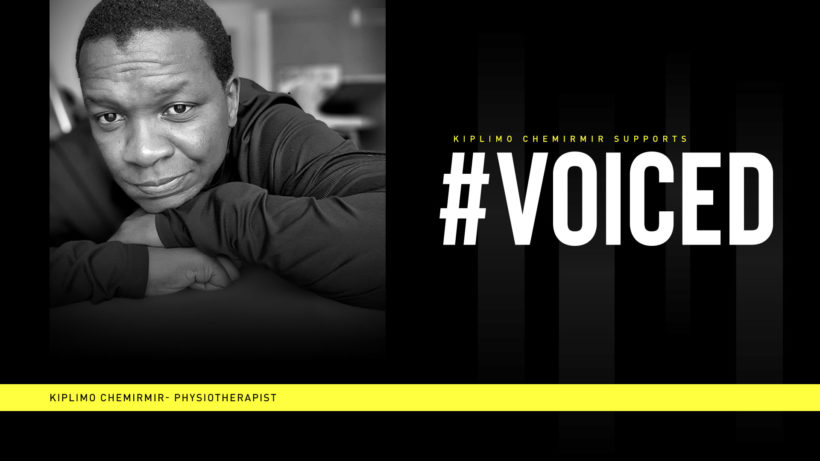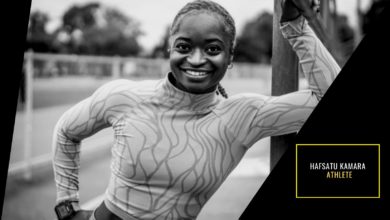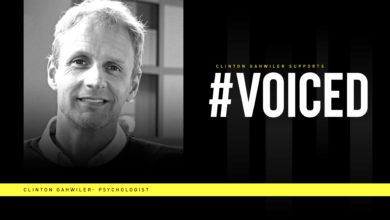Country: United States of America
Profession: Physiotherapist and massage therapist
Kiplimo Chemirmir is a retired Kenyan athlete. Injuries hindered the progression of his running career and when he wasn’t getting proper treatment, he opted to start his own physio services, focusing on sports injuries. Kiplimo is now based in the USA where he owns ‘Kiprunning Sports Massage’ and is the creator of Kenthaichi – a combination of Kenyan deep tissue massage & Asian intense stretching.
What are the common injuries in Track & Field athletes and why do athletes get these injuries so often?
These are some of the common injuries that I come across through my clients who are road runners and track and field athletes, both in professional and recreational runners: Runner’s knee, Achilles tendinitis, IT band syndrome, shin splints, hamstring injuries, Plantar fasciitis, stress fractures and ankle sprain.
If you’re like many runners, you may be logging hundreds or even thousands of miles per year. The repetitive impact of all those foot strikes can take a toll on your muscles, joints, and connective tissue. The knees, legs, and feet are the most common injury areas for runners. Issues or on both upper and lower body in field events athletes.
What are the three common misconceptions about physiotherapy?
There are many myths out there, and least I have for you is 5.
MYTH- 1. PHYSIOTHERAPY IS FOR ONLY WHEN I’M INJURED, TIGHT OR IN PAIN.
FACT: Yes, physiotherapy can help with the rehabilitation of injuries, but getting rid of pain is only one part of this rehabilitation process. In most cases, your injury is not actually coming from where it is sore but is a result of a fault in the way you sit, sleep or move – your movement pattern!
MYTH 2- PHYSIOTHERAPY HURTS.
FACT: You may have heard the saying, “no pain, no gain”, however, our job is to relieve pain and discomfort, so it’s in our best interest to keep you as comfortable as possible! Sure, certain techniques may provide some discomfort, but a great physio who are in-tune with their client will know how deep to go and for how long, but the client has to be aware of what’s happening, the reason. In moments like this, communication is very important.
MYTH 3 – PHYSIOTHERAPY IS ONLY FOR MUSCULAR INJURIES
FACT: Physio is not simply massage, Tecar, heat packs and plugging you into electronic devices! Sure, it is great for helping with muscular strains and sprains, but there is so much more: arthritic joints and scoliosis, nerve problems, disc problems, tendon problems, headaches and migraines, neurological issues, balance problems and stroke rehab just to name a few.
MYTH 4 – MY PHYSIO IS GOING TO GIVE ME A WHOLE BUNCH OF EXERCISES
FACT: Giving you 15 exercises to do is a sure-fire way of making sure that you’re not going to do them. What your Physio will give you is 4 or 10 of the easiest and the most effective exercises, and most of the time they’ll be things that can be part of your daily life so you don’t even have to set aside time for them!
MYTH 5 – I JUST NEED A COUPLE OF EXERCISES TO GET ME GOING
FACT: One or two exercises at a time is manageable, however sticking to just those probably won’t be enough to reverse the issues that are causing your injury. A great physiotherapist will form a clear pathway, so that you understand why you have your injury and how to get you moving better and more efficiently. He or She will closely monitor your progress to ensure that you are on the right track.
An exercise may be effective in the short term but then as you progress so will your exercises to match your progress and challenge you. An exercise may even become too flexible for your sport, or detrimental to your injury and need to be changed – these are things a trained professional is able to stay on top of and help you with.
So now you know a little more physio fact from physio fiction, you might be realizing that we can help you with your own situation.
What piece of advice do most athletes tend to ignore?
Over the course of my both careers, I’ve seen a lot of athletes have a habit of taking rest for a few days after they’re injured for granted, because of their made up fear that they’ll lose fitness and have to start all over again. When you don’t go easy on your easy days, and rest after hard workouts inflammation and tightness will continue its course of slowing you down and often the athlete will not like where they end up because it’s a very depressing and painful place. Not taking shortcuts is a rewarding sacrifice. Most of all it is never wise to rack up in too many miles too soon when you just came out of injury. Take your time, you’ll get there. Everything that grows happens through patience.
What role does physiotherapy play in improving an athlete’s performance?
It takes a village to build a warrior, and in our story the athlete is the warrior, we are part of great elders that groom the warrior into his destiny. Physiotherapy isn’t just about treating but also identifying what I call an athlete’s ‘anchors’: conditions that are holding her or him back. For example, if a runner has functional limitations that prevent him or her from extending their stride or swinging their arm, those functional limitations act as anchors that hold that athlete back from becoming great at his sport.
A physiotherapist goes through many years of training to learn to diagnose and correct athletic anchors; that’s why it’s wise for athletes to seek out the expertise of these health care professionals.
Physiotherapy augments athletic abilities, aids in injury prevention, and increases awareness of how to effectively care for a body destined for intense sports performance. For these reasons, investing in physiotherapy is one of the best decisions an athlete can make.
How has the access to physiotherapy treatment and services improved over the last 5 years?
Advancements in physiotherapy treatment and rehabilitation methods and technology have led to quicker and more effective recovery in the past few years.
I’ll actually talk about something that’s not different. A physical therapist’s main job is to work with a patient and be one-on-one with a patient and there has not been a replacement, or you might call it an advancement. I would consider it maybe not even an advancement if we lost that opportunity to work on patients.
And then as far as equipment goes, it’s been both the same and some differences. We still use bare bones equipment of our hands and our skills. And that hasn’t changed, and I don’t really see that changing. But what’s been exciting is the introduction of things like electronic devices to add to our craft for treatments, and treadmill training where we can actually put someone in a harness and suspend them over a treadmill and use training on that. You kind of name it as far as devices have been a big, big, change in the last 20 years or so. These devices are important to physiotherapy, but the physiotherapist is the most important, because nothing can replicate the power of touch, compassion, and connection you have with your client.


